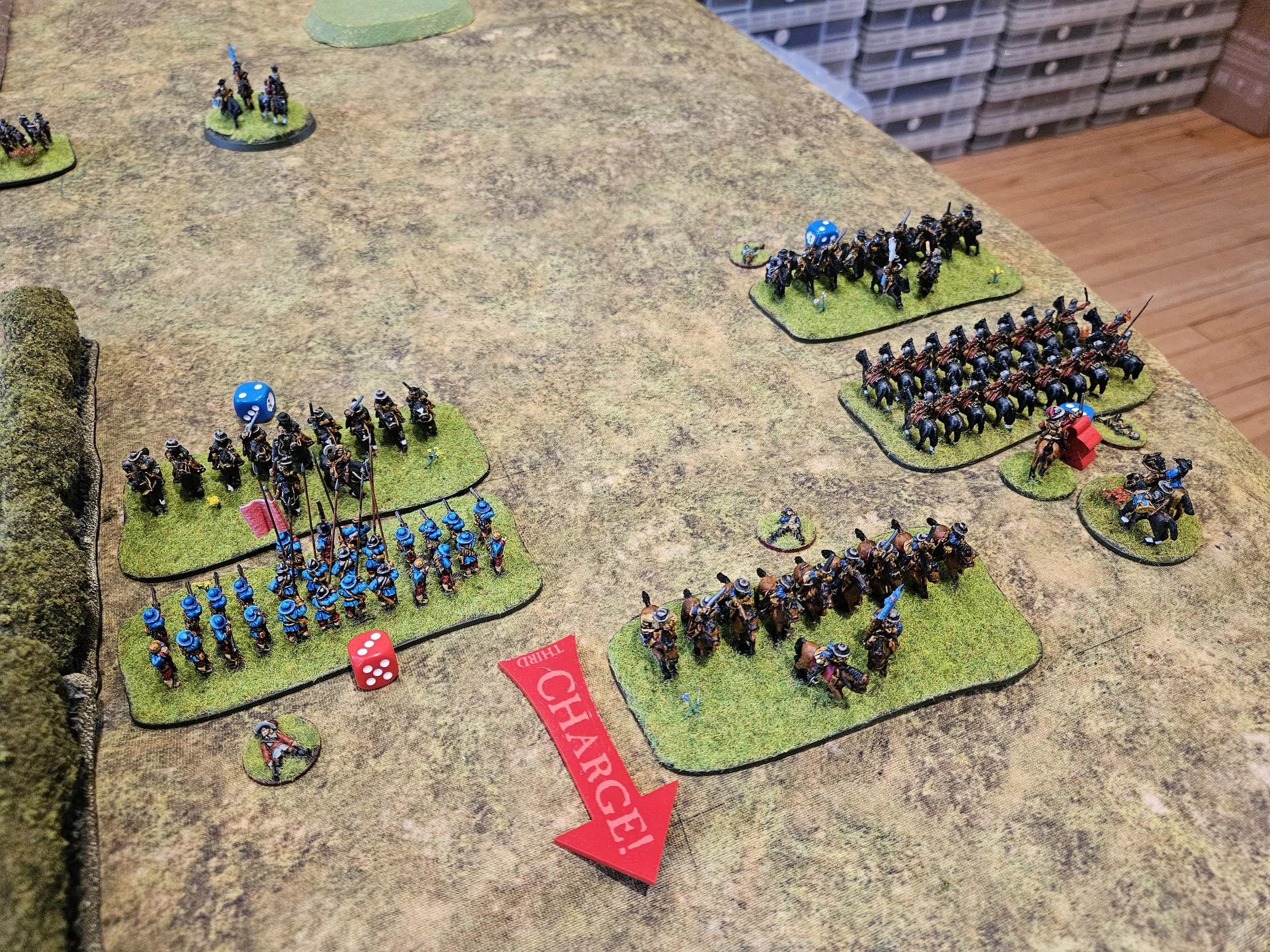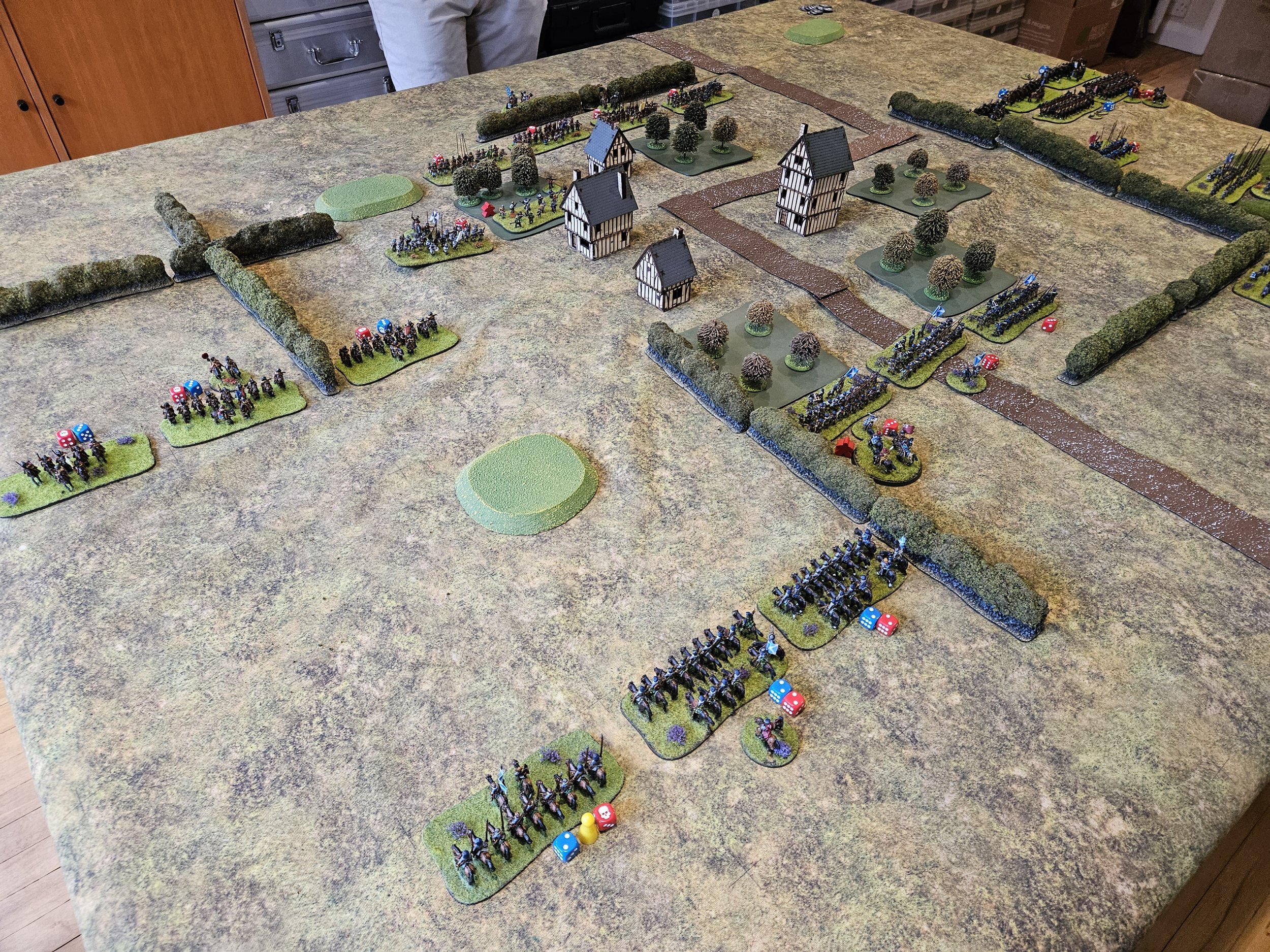Napoleonics with Valour & Fortitude
/A rare day off work so what better way to spend it than wargaming!
Friend Si was putting on a 28mm game of Valour & Fortitude, so I invited myself along and ended up joint-commanding a French rearguard trying to get away from some Prussians and Russians.
The Allied force headed straight for us, so our lead brigade stayed in column and headed towards the left hand ridge, whereas my brigade formed line and started side-stepping left as fast as they could!
Almost immediately some Russians Hussars charged our only battery of artillery. The Hussars were decimated by cannister fire but still managed to get in amongst the guns, sabres swinging. The result: retreating Hussars but no more artillery crew!
It was now fairly obvious that we were severely outnumbered, but all we could do is send off messengers asking for reinforcements whilst continuing with out plan.
My troops were now locked into a forefight with the advancing Prussians, but a very steady volley sent some enemy Militia scuttling backwards. There were, however, plenty more coming forward, and things were looking a bit dicey.
Then, huzzah: our reinforcements arrived. Two more brigades: one of which would reinforce Gary’s assault on the other ridge, one would bolster my wavering men.
Things were looking good at Gary’s end of the table, but a bit dicey at mine. Although I won the first melee I fought, the Prussian landwehr curling in from the right then destroyed my rearmost battalion.
My original brigade were, unfortunately doomed: especially as managed to roll ‘snake eyes’ for my two saves against losing a battalion.
But my reinforcements were now in position, and as the game ended we had certainly fought the enemy to at least a stalemate.
The umpire was consulted and ruled that this had been a French victory: I think that you achieved the mission. The Prussians had taken out most of your right but the left was quite intact and the Russians not too strong. They weren’t in a position to exit the table on your side after 10 turns.
Sacre bleu but that was a hard-fought battle! A French victory, but casualties had been high. My thanks to Si for hosting and running the game, and to Gary, my co-commander, and Dave, the Prussians!
Here are some shots of the table at the end of the game:




































































































































































































